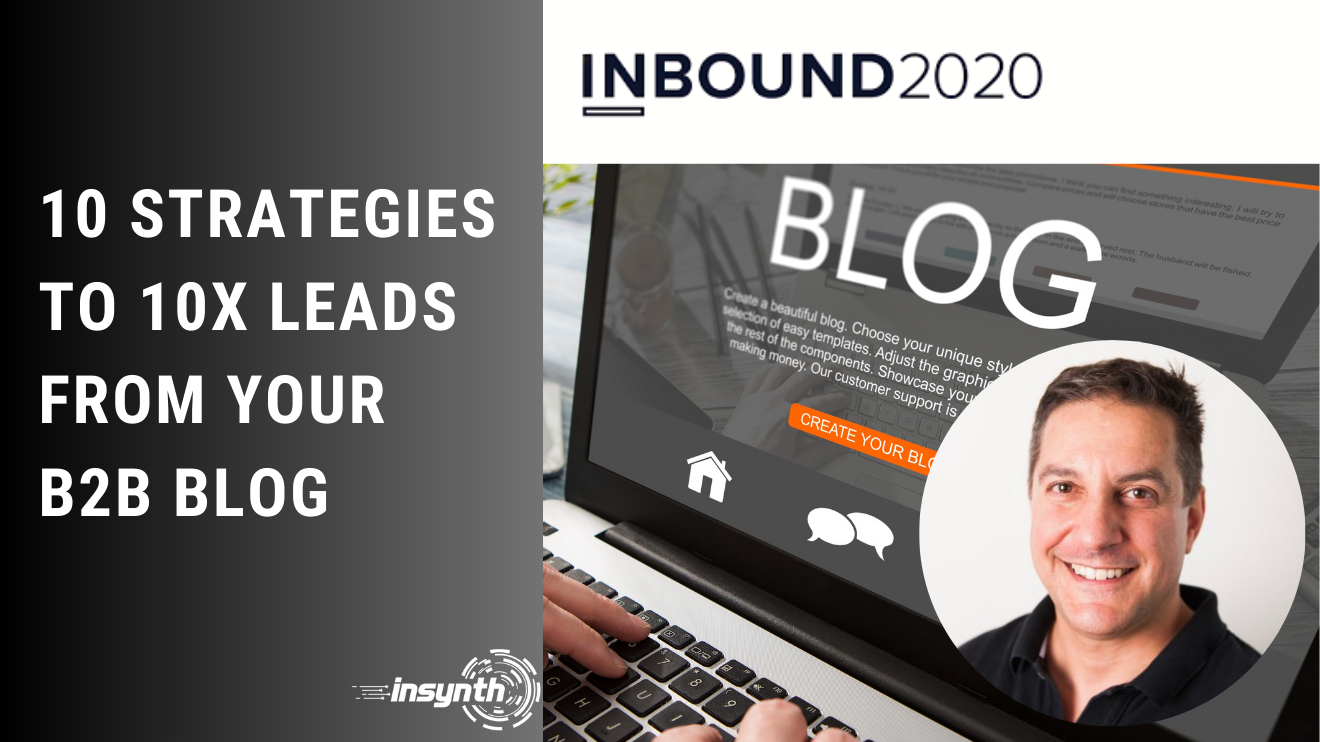3 min read
Live @Inbound 2020: 10 Strategies to 10x Leads from your B2B Blog
![]() Rich Newsome
:
22-Sep-2020 20:12:07
Rich Newsome
:
22-Sep-2020 20:12:07

Led by Chief Executive Officer at Stratabeat Inc, Tom Shapiro, we explore why so many B2B blog posts just aren’t performing – and what you can do to maximise your blog’s potential.
You can connect with Tom via Linkedin here: https://www.linkedin.com/in/tomshapiro/
Blogs Can Be Time Consuming
If you crank out two blog posts a week that take, say, three hours a time to write, you’re spending up to 300 hours a year on blog writing.
Many of us within building products and construction ask the same question:
Is blogging really worth my time?
Of course, there is no simple answer to this.
However, Shapiro states that in order to measure the ROI from your blogging efforts, you need a suitable way to measure the leads generated.
Today, I’ll be summarising Shapiro’s 10 strategies to increase your leads within your B2B blog.
#1 Brainstorm 35 Titles for Your High-Priority Post
This may sound like a high number, but the point here is that you shouldn’t settle for the first title that comes to mind. Brainstorming 35 ideas will open you up to new thinking and ideas.
Shapiro goes on to highlight that your ideas build upon prior ideas, fuelling creativity.
Not only this, your title should be captivating, SEO-driven and on-brand, so there’s a lot to pack in to one title, further highlighting the reason to brainstorm in such a way.
#2 Evoke an Emotional Response
Here, Shapiro talks about avoiding being boring at all costs, highlighting studies by neuroscientist, Antonio Damasio, who found that those who suffered damage to the part of the brain that triggers emotions found it difficult to make decisions.
The point Shapiro is cleverly trying to make here is:
Make it easy for your readers to illicit an emotional response by clicking your CTA, downloading your content or signing up to your webinar (or other next step actions).
#3 Use Behavioural Analytics
Shapiro talks about the use of behavioural analytical software which you can actually download on your website. This allows you do uncover viewers’ ‘digital body language’. In other words, software that allows you to uncover how far down people are scrolling on your page, and what is and isn’t working.
This has come as news to me; something I’d never heard of before!
I may need to find out more on this ‘digital body language’ software.
#4 Watch Video Recordings
Linking with tip number three, Shapiro talks about the value in watching video recordings of your website sessions to gauge user interaction.
This will allow you to see, first-hand, how viewers interact with your blog.
#5 Design Matters
Shapiro found that there is a correlation between great website design and high traffic in order to improve viewer experience, so if your website is poorly designed, the amount of leads you obtain will be compromised.
In fact, Shapiro points out that websites with good design had a 441% higher traffic acquisition than sites with poor design.
#6 The Right Way to do Surveys
Inserting surveys into blog posts makes them interactive and allows you to capture the voices of your audience.
#7 Behaviourally-Triggered CTAs
Shapiro highlights the importance of understanding the experience underlying your website visits, and aligning your CTAs to their behaviours for a higher conversion rate.
For example, you can select a CTA based on a specific viewer behaviour.
Again, this will require investment in your tech stack to access this functionality.
#8 A/B Test Your CTAs
Here, Shapiro emphasises that CTAs are your moment of truth and point of conversion, so you should test them thoroughly.
#9 Form Optimisation
If you don’t have a form on your blog, go and sort it out right away!
Once you have your forms on your blog, test them to identify any fields that may be causing friction to reduce abandonment rate.
Quite often, people are put off by the prospect of having to fill out too many fields. This could be a major factor in why you aren’t converting as much as you could (or should) be.
#10 Shock & Awe
People want social proof, so tie in and link your case studies and testimonials to your blog wherever you can.
Seeing your product or solution in action will allow your audience to see how well your offering is working for other individuals.
Conclusion
All these content hacks will work perfectly for your building product and construction company, but we understand that some may be more difficult to implement than others.
If you require any further assistance on any of the areas covered in this blog post, don’t hesitate to reach out now!
We’ve also created an essential guide to content marketing for the building products and construction company, so be sure to grab your copy by clicking the CTA below.
About Insynth
Insynth Marketing is a leading UK construction marketing agency based in Shifnal in the West Midlands.
They use the latest inbound marketing techniques such as construction inbound marketing, to support building product companies to grow their business by proactively driving sales lead generation activity.
As the only HubSpot certified agency to major on construction marketing, we bring together construction marketing strategy, digital strategy, website design, SEO, content marketing, email marketing, sales automation, marketing automation and HubSpot CRM implementation to produce successful campaigns and great results for our clients.

